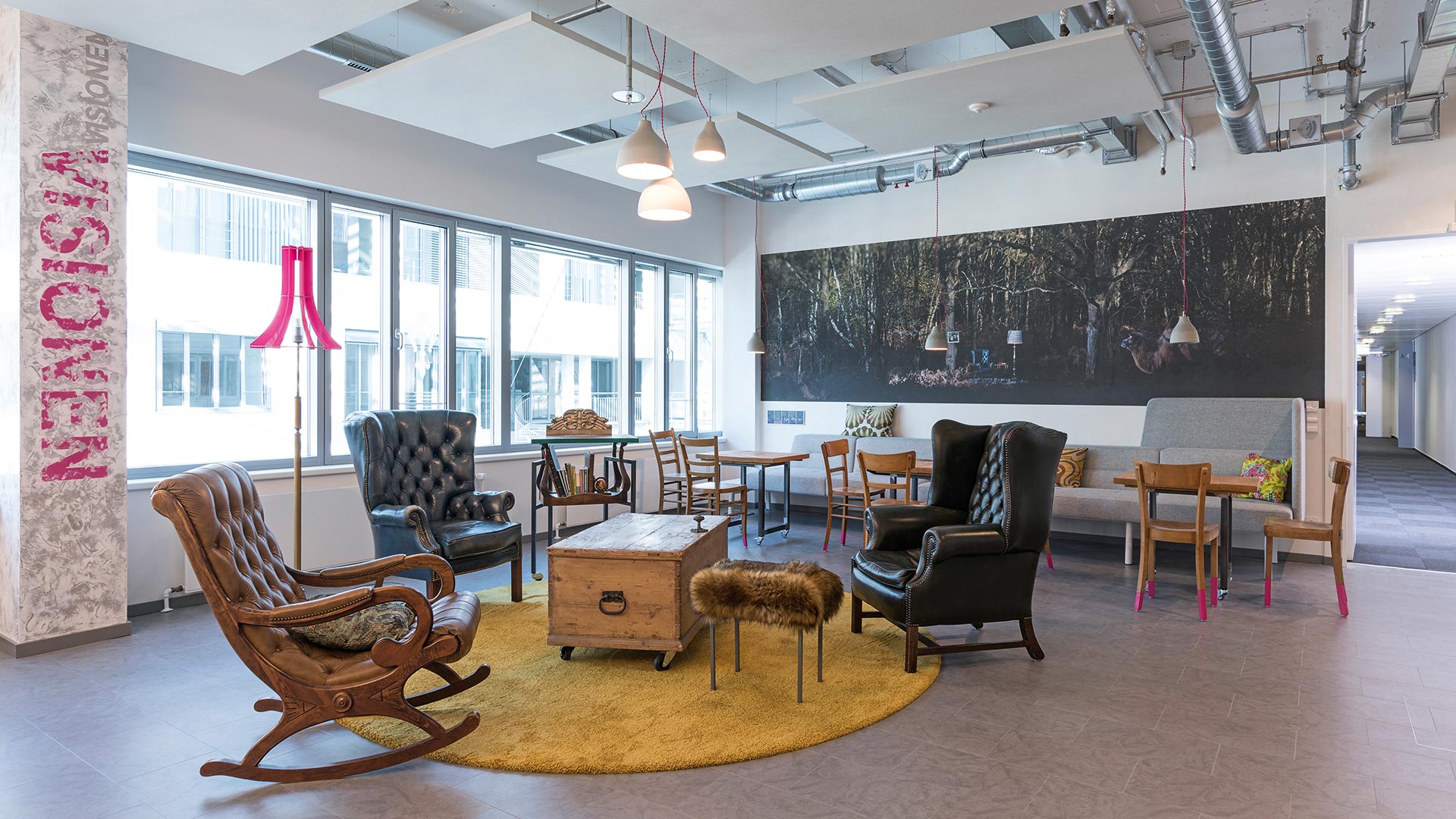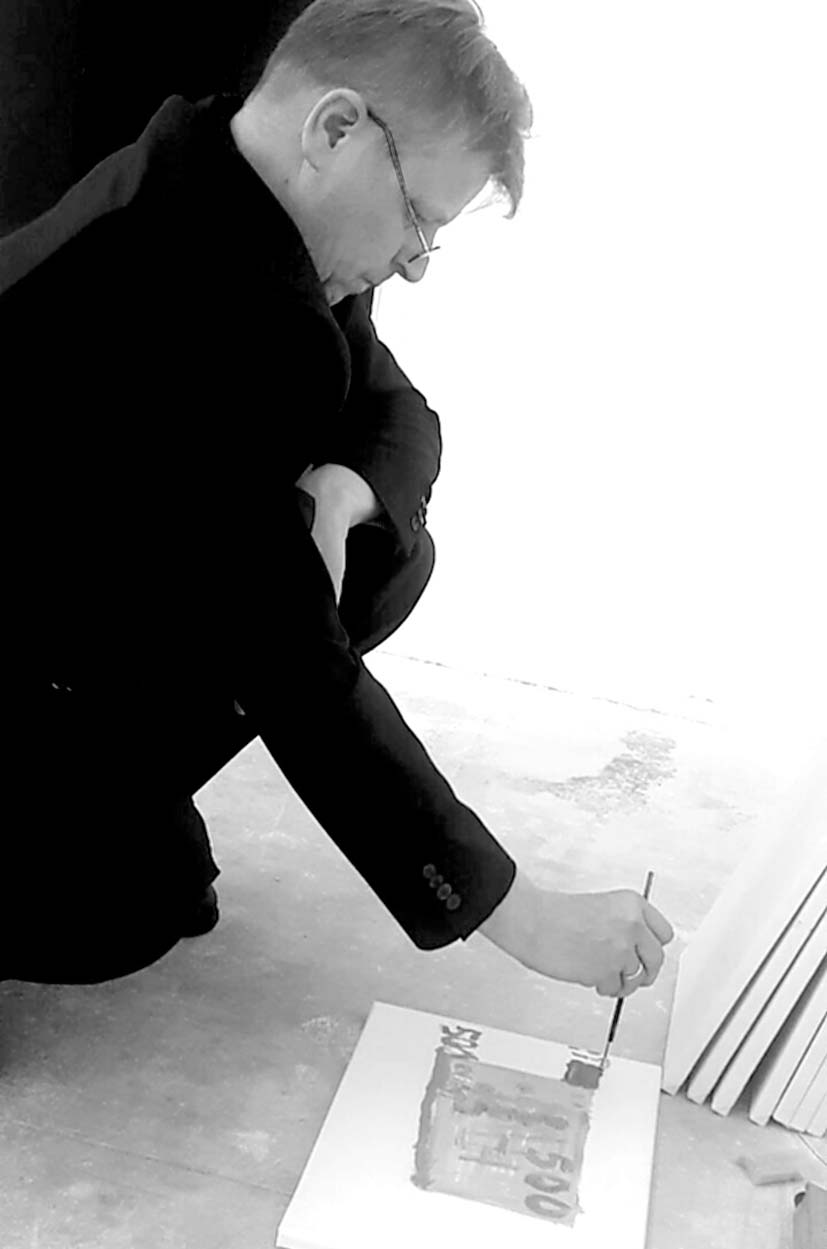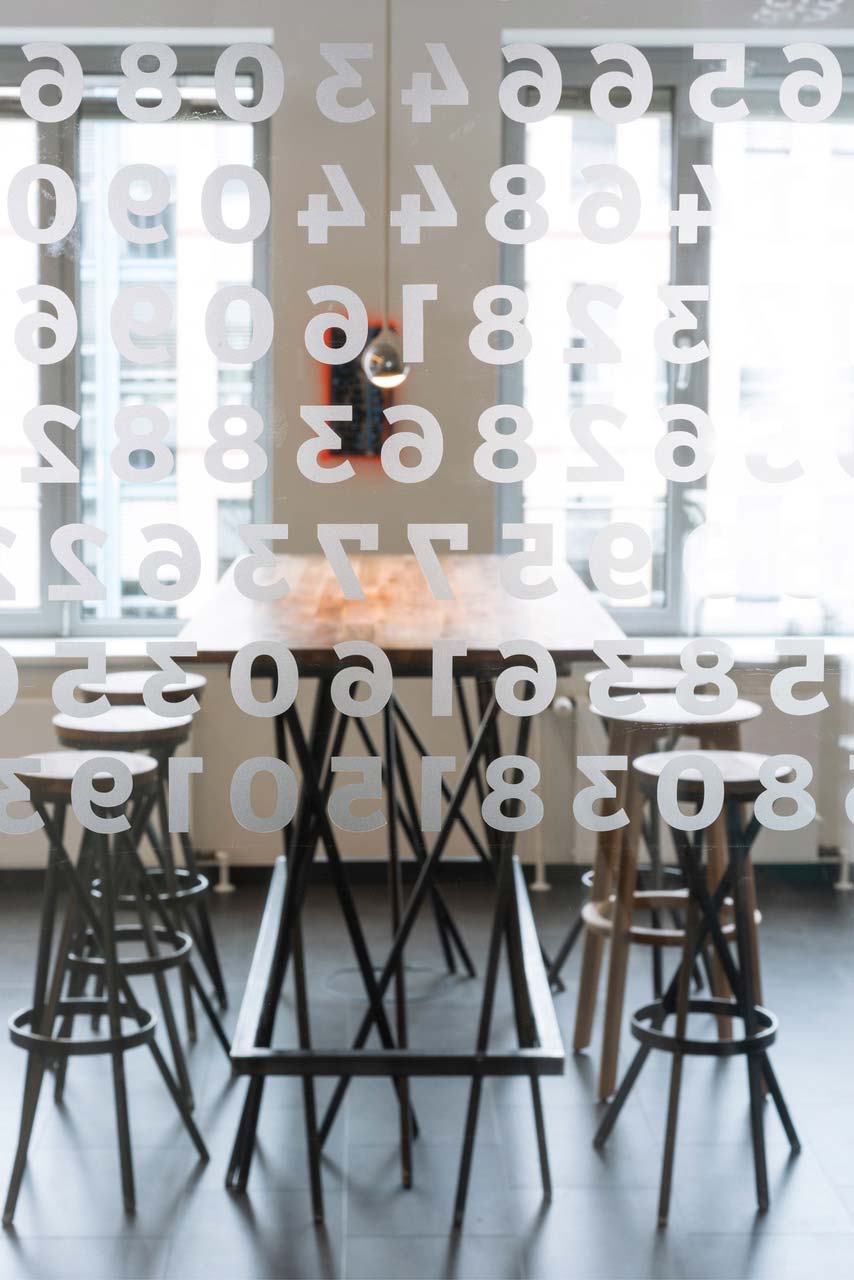From office space to space for thought

Reflections on creation and economy
In the everyday world there are very few points of contact between the arts and economy. Any newspaper reader knows that the things pertaining to the economy are dealt with in the economics section and those to the arts in the arts section. The only established interface in this context is the art market, where the fine arts are an explicitly economic factor. This is even truer today, when the “euro-zone” is shaken by new reports of crises on an almost daily basis, driving up demand for art as a commodity. When even gold, which in the past was considered the ultimate safe haven asset that affords protection from market turmoil, is exposed to sharp shocks, works of art become sought-after capital assets.
But economic turmoil also affects the arts and arts coverage in another way, as they become a forum for criticizing the increasing monetization of the world. Whereas in the past, artists, writers and other economic laypersons were excluded from participation in any discussion of economic questions as they supposedly lacked an understanding of economic issues, there is now increasing acceptance of the fact that economic discussions also produce more questions than answers. From the perspective of people better versed in the arts section of the newspaper, economics as a scientific discipline with a long tradition could lay a better claim to a truth derived from precision, at least in the field of business management with its empiricallybased arguments. But the general public has completely lost this belief and opinion. And when the teleology of scientistic reasoning logic failed, the hour of the arts arrived. What is currently happening in the world is too complex to be bent to suit linear thought processes, since doubting that reasoning logic with its linear arguments hold the truth is a traditional element of artistic thought and humanistic argumentation. And each time it is proved that supposedly reliable scientificallybased forecasts have all failed, interest grows in philosophical and artistic concepts that voluntarily deny themselves the reliability of systematic problem-solving approaches.

The idea that art is a suitable instrument for overcoming crises of civilization has a long tradition. The artistic reform movements of the 19th century, for instance, were inspired by a desire to improve humanity by means of aesthetic interventions. Conceiving art and life in terms of cause and effect in this fashion was to remain the preserve of the positivist 19th century. But the idea of using art to more or less directly influence
human thought undoubtedly continued to bear fruit. Although art resists such ascriptions and without wishing to force it into such a functional context, this does nevertheless open up aesthetic and
intellectual possibilities. Artistic thought and action do not bow to the supposedly unalterable rules of everyday logic.
Art is always an appeal to the sense of the possible. In The Man without Qualities, his novel written between 1930 and 1932, Robert Musil said, “But if there is a sense of reality, and no one will doubt that it has its justifications for existing, then there must also be something we can call a sense of possibility. Whoever has it does not say, for instance: Here this or that has happened, will happen, must happen; but he invents: Here this or that might, could, or ought to happen. If he is told that something is the way it is, he will think: Well, it could probably just as well be otherwise. So the sense of possibility could be defined outright as the ability to conceive of everything there might be just as well, and to attach no more importance to what is than to what is not.”
Such a quasi-artistic attitude opens up new perspectives for thought. This might include, for example, the logical insight that we can only decide those questions that as a general rule cannot be decided. Because all questions that can be decided have already been decided by the rules of discourse, by the rules according to which questions are asked and answers are given. The question, for example, of whether the number 1,258,534,288 can be divided by the number without a remainder is no harder to settle if the figure that is to be divided does not have ten digits but a million or a billion. This might possibly exceed the power of an ordinary calculator but the question can be solved and is thus decided. It might take more or perhaps less time to arrive at the decisive answer to a question, but it can be done. It is not we who provide the answer; it is compelling logic. It is only where questions are always impossible to decide that this law ceases to be valid and even the force of logic no longer applies. Yet at the same time, the freedom of the answer brings with it a responsibility of the decision.

As art enters everyday life, what is merely an intellectual game becomes an aesthetic echo chamber for the overabundance of artistic thought with its utopian potential. As a rule, corporate buildings are constructed and furnished by architects. And as a rule, architects and their patrons agree upon a plain and practical style with little ornamentation. Unadorned and modern is the motto, an ideal that was realized in exemplary fashion by the artistic reformers of the early 20th century. A style that was once intended as a normative response to the historicism of the 19th century has since become the ultimate answer to a question that was first asked in 1828: “In what style should we build?” Today, the answer seems clearer than ever. The Makart bouquet, which at the end of the 19th century was considered to be the ultimate in good taste, has gone forever. Its signalling function has been silently usurped by the WG24 table lamp designed by Wilhelm Wagenfeld in 1924. In addition to providing light, the function of the Bauhaus lamp, which has been reproduced many thousands of times and even boasts its own Wikipedia entry, is to demonstrate the sense of style of the occupants in almost identically furnished homes and offices. The furniture industry stocks an abundant supply of moderatelypriced replica Marcel Breuer cantilever chairs or Ludwig Mies van der Rohe Barcelona chairs that are mass produced in the Far East for companies and households alike. Suddenly this supposedly contemporary translation of Mies van der Rohe becomes “bad & off the shelf.” And whereas the historicism of the 19th century was superseded a few decades later by art nouveau, the new style known as Jugendstil in German, the historic Bauhaus reception is enjoying a vibrant revival a century later to which there is no end in sight. The tenacity with which people cling to this historic style is all the more surprising because the Bauhaus historicism runs counter to a widespread striving for “Gemütlichkeit” that we are more inclined to attribute to the historic ambience of 19th century homes. This manifests itself in the desperate efforts to wring some homeliness from the cool and elegant leather couch by draping them in fluffy woollen blankets and cuddly cushions that have been trimmed into shape with karate chops only to produce a shrill clash of styles. Even less homeliness materializes in the generically faceless offices that almost no sentient contemporary would describe as possessing an inspiring atmosphere. Nor can the ever-increasing diversity of office flora breathe life into these depressingly interchangeable non-places. And there can be no doubt that the French term “non-lieu” (engl. “non-place”) coined by the French anthropologist Marc Augé can aptly be used for offices. He describes non-places as usually monofunctional spaces in an urban and suburban context such as shopping center, motorways, railway stations, airports and office complexes. Unlike traditional places, these faceless places, which are completely interchangeable in their similitude but also because of communicative neglect, lack relations and identity but, above all, a history and individuality. Entering a modern office complex, one would like to groan with the famulus from Goethe’s Faust,
“The space is narrow, nothing green, No friendly tree is to be seen: And in these halls, with benches filled, distraught, Sight, hearing fail me, and the power of thought!”
In the modern office art can become a powerful antidote. Unlike the fashions of supposedly timeless good taste, art cannot tolerate a standstill. Art creates places by bestowing individuality and uniqueness on even unspecific and interchangeable spaces. And even where the artistic spaces remain unnoticed for the time being, they nevertheless have an effect on their audience. Art always provokes a subjective reaction on the part of the viewer who is willing to engage with it. And good art has an effect even where the will to dialogue first has to be awakened. One might almost even be tempted to see this stimulating effect as an aesthetic quality criterion. It might at least be worth putting it to the test in our own personal experience.
For art, surrendering its habitual place involves a very considerable risk. Where art does not present itself in the context of a museum or gallery it must also assert itself against places that condition their audience to such an extent that their sense of perception of their own environment is paralyzed. But this risk is one worth taking. Where art holds its own, it awakens feelings for one’s own existence and presence that enable and promote subjective experiences. Irrespective of whether this reaction provokes affirmation or rejection, it always invites communication. Be it in silent dialogue with oneself or in dialogue with others the result is stimuli for feeling and thinking. It is clear that we cannot assume a simplistic principle of cause and effect, but an interdependence that can be neither described in general terms nor directly expressed in monetary terms. But this is precisely what makes experimentation at the interfaces of art and industry so exciting also, and especially, in times of crisis.